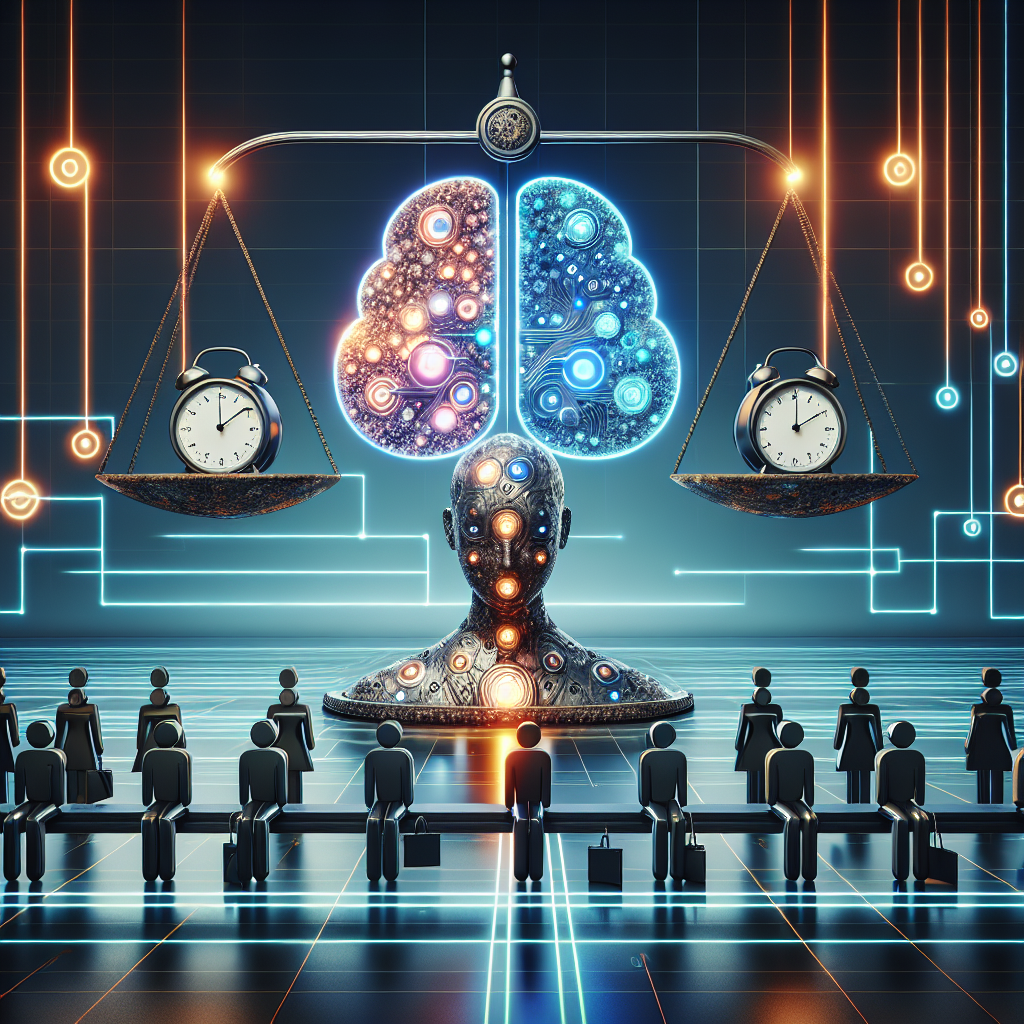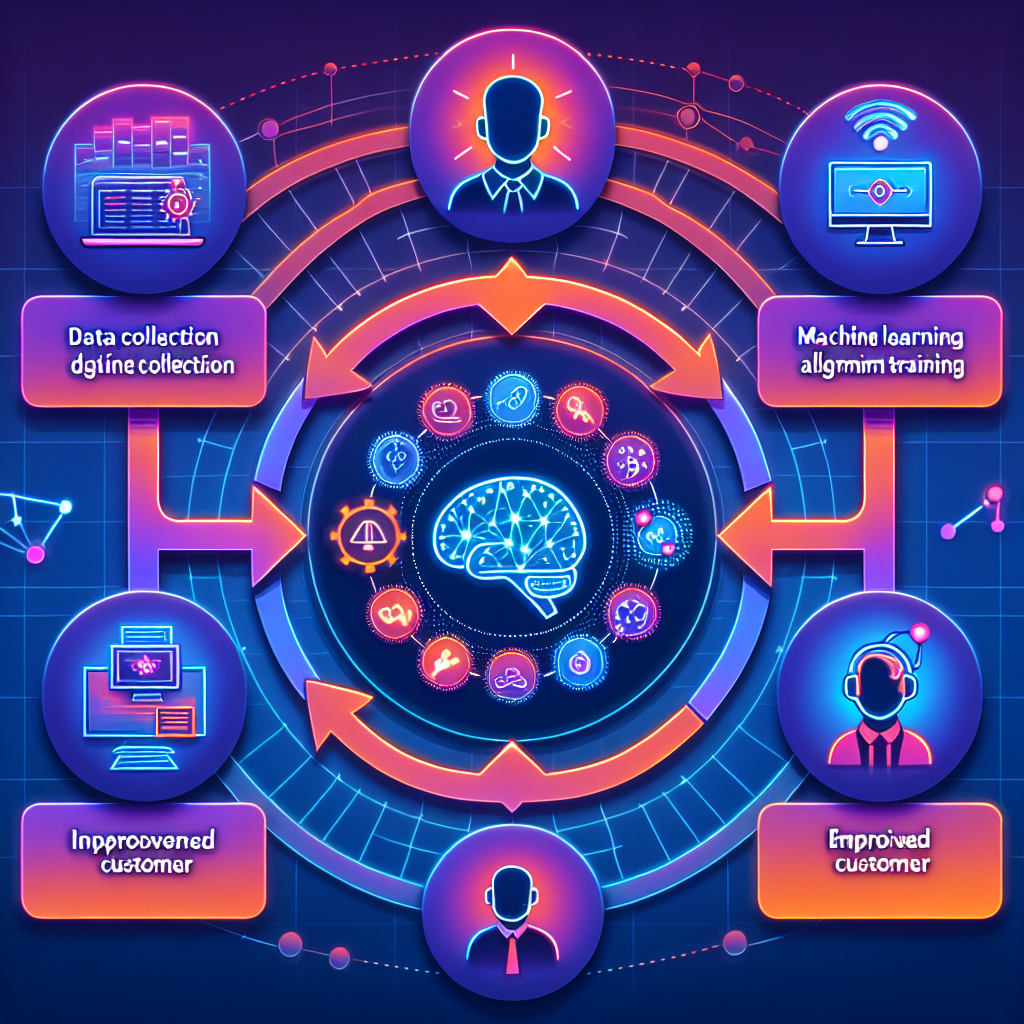
As the digital transformation journey gains more traction, organizations are constantly seeking innovative strategies to enhance customer service. Artificial Intelligence (AI) plays a pivotal role in this journey. Particularly, one area of focus has been the application of AI in managing call flow and optimizing hold times.

Long wait times and inefficient call management systems have always been a bane for customer service across industries. It leads to customer dissatisfaction and creates a negative perception about the company. The necessity of reducing hold times cannot be overstated, and here's where AI has proven its worth. For example, AI-powered Interactive Voice Response (IVR) systems can manage call queues more efficiently, ensuring that customers are not kept waiting unnecessarily.
The use of AI also enables balancing efficiency and improving the overall customer experience – achieving two important objectives at the same time. AI-powered customer communication channels have a wide range of advantages:
First, they streamline calls, reduce average handling time (AHT), and improve first call resolution (FCR). This contributes to increased efficiency and cost savings.
Second, they provide personalized customer interactions based on a customer's communication history and preferences. This results in a significantly improved customer experience.
From these examples, it is evident that AI has transformed the way calls are managed in customer service. Companies can leverage AI technologies to drive customer satisfaction and enhance their business growth.
Artificial Intelligence (AI) has delivered ground-breaking solutions across various industries, enhancing efficiency and transforming customer experiences. In today's customer service industry, AI continues to redefine the frontline, notably in optimizing hold times. The mechanics of AI call systems are fundamental to driving this change.
The AI system in call centers works dynamically within a chain of processes: Call Routing, Predictive Call Analytics, and Real-Time Decision Making.
Call Routing is the first step in the process. When a caller gets in touch with a customer service center, the AI algorithms evaluate a multitude of variables such as the reason for the call, the caller's history, and even the proficiency and availability of customer service representatives. The aim is to match the caller with the most suitable representative to handle their request.
The second link in the chain is Predictive Call Analytics. Here, the AI platform uses historical data to forecast call volumes, durations, and even the nature of customer queries. This allows it to anticipate the requirements of the customer before the call even begins, thus dramatically reducing hold times.
Lastly, AI call systems utilize Real-Time Decision Making. During the course of the call, the AI can annotate conversations in real time, which helps agents with on-the-spot recommendations. Whether by optimizing scripting or suggesting the natural course of action, real-time AI assistance aids in faster resolution and improved customer satisfaction.
From call routing through to real-time decision-making, this orchestration is how AI call systems manage to fine-tune customer service hold times. AI systems champion efficiency, yet balance it with maintaining stellar customer experiences. Learn more about how AI is optimizing the future of customer service.
The accelerated development of Artificial Intelligence (AI) technologies has led to significant enhancements in various sectors, including customer service. One crucial application of AI in this domain is the optimization of hold times, striking the right balance between streamlining operations and preserving the customer experience. Let's delve into some of the AI features that contribute to this optimization: automatic call distribution, speech recognition, and personalized customer interaction.

Automatic Call Distribution (ACD) systems use AI to route inbound calls to the most appropriate agent or department within a call center. These AI-powered platforms analyze call volume, agent availability, and even the nature of incoming queries, thereby shortening hold times significantly and improving service efficiency.
AI-powered Speech Recognition is another pivotal feature that augments customer experience. By interpreting and processing customer's spoken language swiftly and accurately, this technology can navigate customers through the available services or resolve their queries directly. Also, it reduces the need for customers to wait for a human agent, further reducing hold times.
Meanwhile, Personalized Customer Interaction facilitated by AI technologies enhances the customer experience by tailoring responses to individual's unique needs. Advanced AI can analyze customer's prior interactions, purchase history, and preferences to provide them with personalized services. Incorporating such personalization not only amplifies customer satisfaction but also reduces the overall time required to solve customer queries or issues.
In conclusion, AI technologies offer a promising solution to optimize hold times without compromising the customer experience. They foster a seamless, efficient, and personalized interaction, paving the way for higher customer satisfaction and enhanced service quality.
Artificial Intelligence (AI) is innovatively transforming the modern customer service landscape by optimizing hold times. The phenomenal ability of AI to integrate seamlessly with existing infrastructure, maintaining the delicate equilibrium between efficiency and customer experience, is becoming increasingly vital in the dynamic business environment.
AI lends itself effortlessly to interworking with pre-existing business communication systems. These systems include VoIP, CRM, and customer support software. The convergence of these technologies with AI creates a more efficient, streamlined customer service experience, without necessitating major system overhauls.
Integration of AI into VoIP systems enables intelligent call routing to connect customers swiftly to the right agents, thereby reducing wait times. In the CRM space, AI allows for predictive customer behavior analysis, leading to proactive troubleshooting and minimized hold times.
Within customer support software, AI-powered chatbots provide immediate responses to frequently asked questions, allowing live agents to handle more complex queries and thus reducing overall hold times.
The seamless integration of AI into existing tech infrastructure truly enriches the functionalities of these systems. A vivid example is AI’s capability to concurrently analyze multiple data points during real-time interactions to instantly provide agents with pertinent customer info. This augments the customer experience by equipping agents with the necessary tools for personalized and efficient service.
Businesses with a vision for customer-focused growth should look at AI integration as an integral part of their strategic blueprint. Convenience, speed, and personalized service are prerequisites in the modern customer service landscape, and AI is the cornerstone in achieving these targets.
In an increasingly digital world, AI has proved instrumental in multiple sectors. One such impressive application is AI in managing hold times. Companies across the globe have integrated AI to balance efficiency and customer experience, several of which we will explore in this section.

The first case takes us to a major telecom company that benefited immensely from integrating AI. They used an AI-driven virtual assistant to handle initial customer contacts. The assistant actively engaged with customers as they waited, providing immediate responses to standard queries and gathering required data. This not only freed up human agents for more complex issues but also reduced the actual hold times.
Moving on to the travel and hospitality sector, we find another fascinating example. A renowned travel agency implemented an AI-powered scheduling system. The algorithm predicted call volumes based on historical patterns and optimized staff schedules, ensuring optimal customer-agent ratio at peak times. As a result, the agency significantly improved its response time and eventually customer satisfaction.
Another spectacular case comes from the banking industry. A leading bank utilized deep learning AI algorithms to analyze customer behavior and preferences. The AI then directed calls to suitable agents, ensuring efficient issue resolution while precisely managing hold times.
In conclusion, these cases clearly manifest how AI implementation can optimize hold times, ultimately enhancing customer relationships, satisfaction, and business efficiency.
In customer service, Artificial Intelligence (AI) has already proven itself as a transformational force, well-capable of optimizing hold times and enhancing overall customer experience. Yet, the most exciting prospects may still lie ahead. With continuous advancements in technology, we're looking forward towards even smarter AI solutions that will largely redefine the entire communication sphere.
Research currently conducted by DeepMind, a leading AI research laboratory, foreshadows an era where AI can understand and connect with customers on an emotional level. Future AI models won't just predictively route calls to optimize hold times, they will also identify customer's emotional status and adjust their interactions accordingly. They'll deliver support that's not only efficient but also empathetic.
This emotion-recognizing capability, backed by advanced machine learning, will allow AI to provide personalized responses. The 'personal touch' often missing in machine interactions will thereby be reintroduced, crafting experiences that feel both quick and human.
Furthermore, next-generation AI is expected to feature increased predictive capabilities. By leveraging huge datasets and deep learning algorithms, AI will anticipate issues before the customer highlights them. A deep learning based approach will thus be instrumental in minimizing hold times, eliminating bottlenecks and predicting customer needs for proactive support.
In summary, the future of AI in customer communication paints a vision of elevated efficiency, empathy and personalization. By bringing together the strengths of AI and the human touch, customer service experiences are bound to reach unprecedented levels of satisfaction.
Start your free trial for My AI Front Desk today, it takes minutes to setup!








